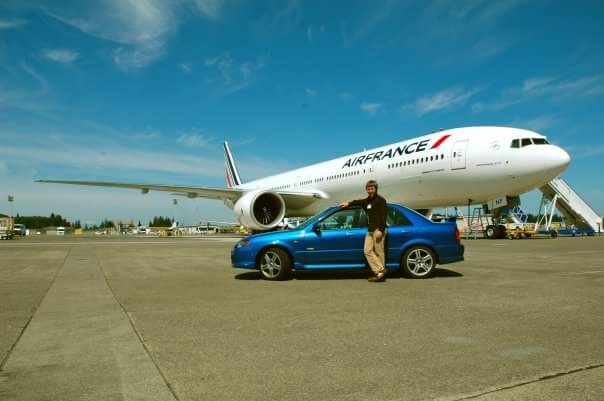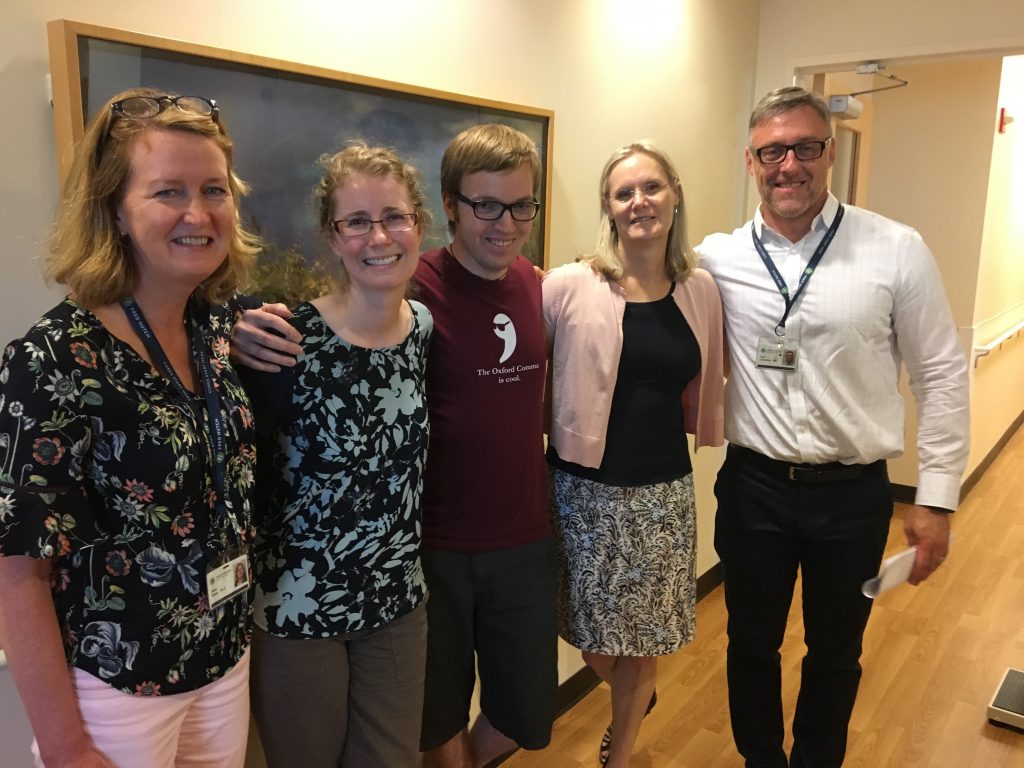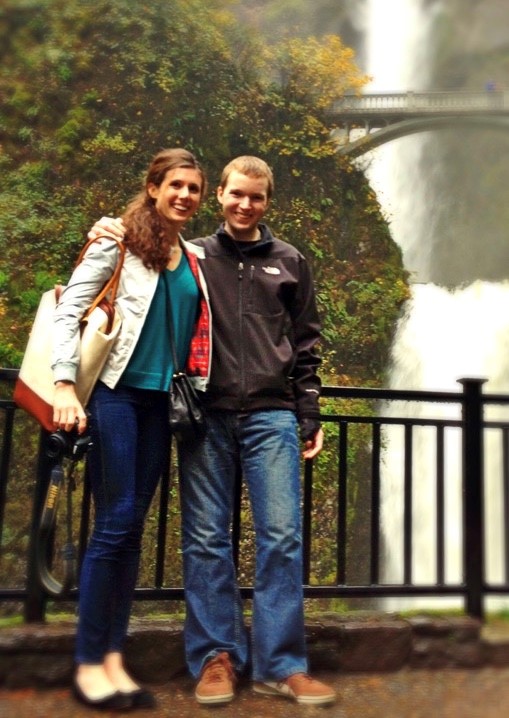The first time I ever got a blood transfusion was seven years ago in a hospital in Dakar, Senegal. The last and 264th time was five years ago, I was at Seattle Children’s Hospital, and I was cancer-free.
In Senegal, I was 20 years old, had a bruise up the length of my upper right arm, and thought the reason why I was so thin, pale, tired, and feverous was that I was a white kid from the Pacific Northwest not genetically equipped for the 120-degree summer heat of the Sahara Desert.
But the blood bags kept coming; another, it seemed, every few hours and many of them filled with some liquid the color of fresh honey and labeled “Plaquettes,” the French word, I would later learn, for “Platelets.” For four days, I received almost-constant blood and platelet transfusions, and nobody told me why. But when a medevac flight took me to a hospital in Nuremberg, Germany and as I passed beneath a sign that read “oncology,” it occurred to me that I never really knew what that word meant. It wouldn’t be long until I found out.
It would take three years, 32 surgeries, chemo, radiation, a stem cell transplant from a young woman from Oklahoma and 264 more blood transfusions to cure me of cancer and clean up the mess it made inside me. My heroes are surgeons, nurses, oncologists, an Oklahoman girl whose love for her brothers motivated her to save my life, and 265 altruistic strangers whose blood kept me alive when my own body turned against me.
~~~~~~~~~~~
My big sister Erin was weeding her garden in Coupeville, Washington, in early July 2010 when she got the phone call nobody ever sees coming. It was the perfect summer day – the sun was shining, the air was still and her big yellow dog Max was snoozing in some dust next to her.
That phone call was from me. I was in Nuremberg, Germany – somewhere I wasn’t even supposed to be – and I was calling her to tell her I had leukemia.
~~~~~~~~~~~

Bill standing with a few of things he loves: cars and planes.
It found me in the deserts of West Africa, 9,000 miles away from home in a place where I spent late summer nights under the brightest night sky I’d ever seen listening to Bon Iver’s “Skinny Love” on repeat and thinking about a girl I was pretty sure I was in love with. I had been working on a research project for school in Senegal when I started feeling sick.
It all started in a microscopic place in my bone marrow. That’s what the science says, but if you asked me, I’d say it started in the part of my back that I’ve have never really been able to scratch. We’ve always been at odds, that spot and me, and being the place in my body where my cancer began would be a hell of a power play.
You don’t feel it when you get cancer; it doesn’t tap you on the shoulder or put its hand out to for you to shake. And for as momentous of a thing as it is, it comes on with very little fanfare.
~~~~~~~~~~~
Two weeks after arriving in Dakar, a long, purple and splotchy bruise stretching from my shoulder down to my elbow appeared. How strange, I thought, for extreme heat to cause something like that.
And then out in the desert, my skin turned stark and eggshell-white and I developed dark spots in my vision – leukemia cells had found their way even into my eyeballs and detached my retinas. I hemorrhaged weight and developed a high fever – my body’s confused, last-ditch effort to stop the rogue cells’ overwhelming, unchecked aggression. Unstoppable now.
Back in Dakar and preparing to go home, my breaths were barely enough to get me up the flight of stairs to our apartment. I was panting and light headed halfway up, for when the air reached the alveoli in my lungs, they were hardly any red blood cells there to be oxygenated. And my finger, pricked by a nurse in a side-street doctor’s office, took far too long to stop bleeding.
Millions of mutated, self-righteous white blood cells – the bloodstream bullies – were silently taking over, crowding out my platelets and red blood cells for the cruelly simple reason that they could.
The mutant cells floated into my toes, my fingertips, my cerebral spinal fluid, my lungs, and even my brain stem; no part of me could hide from them. Every single heartbeat pushed them further and further into my most outlying capillaries and sealed my fate tighter.
My body, outflanked and outgunned, had created a monster.
~~~~~~~~~~~

Part of Bill’s Seattle Cancer Care Alliance transplant team.
After an emergency medevac flight to Nuremberg, Germany, I met up with my mother and we found ourselves in a bright-white patient room in the oncology wing of an enormous hospital. She, unlike me, knew what the word “oncology” meant and, as a hospital employee herself, also knew that there’s only ever one reason why people go to that unit.
She shot up in her chair when the doctor came in and extended his hand – she was nervous, pained, terrified. She leaned in towards him and took my hand.
That doctor was tall, brown-haired and Germanic, soft spoken but authoritative. He asked me what they had told me in Senegal. “Nothing,” I said. “They gave me a ton of blood but they never told me why.” This was a quirk of the old French colonial medical system still used in Senegal today whereby patients are not informed of suspected diagnoses, only confirmed ones. It must be malaria, I’d thought, or yellow fever – something that would have made sense.
The doctor seemed surprised and drew a long breath, leaning back on his little round wheeled stool, nodding almost imperceptibly.
My big sister, 7,000 miles away, was just waking up. It was sunny outside, a good day for gardening.
“Oh,” the doctor said, leaning forward. “You have leukemia.”
The sound my mother made as her back doubled over and tears broke free from her eyes was not a cry or a whimper or a moan. It was a sound that can only come from a mother whose heart, full of love, hope and joy since the moment she first laid eyes on her son is shattering into million pieces and she’s crumbling.
That was the worst day of my life until the day came a month later when the oncologists came in to say that my only shot at a second chance depended on the kindness and stem cells of a stranger who may or may not even exist. That’s when I got scared.
~~~~~~~~~~~

Bill and his stem cell donor, Kathryne, when they met in 2014.
Kathryne Taylor is a 31-year-old vegetarian food blogger from Oklahoma City with a degree in advertising, a spotted, mid-sized dog named Cookie and a conviction for healthy eating bordering on the religious. She has a wide smile, long, wavy brown hair and every day I have lived since January 11, 2011 has been thanks to her. Because that was the day she donated some of her stem cells to me in a tiny bag that seemed far too small for what it contained: the rest of my life.
I had to wait five years for my doctors to consider me “cured” from leukemia. What Kathryne did for me that day is far from the only help I had to reach that zenith of cancer recovery, but without it, everything else – the chemo, scary radiation sessions, 32 surgeries, and 265 blood transfusions – would have made no difference.
And that, to a guy who was only 20 years old, hadn’t even graduated from college yet or made it to the south of France, was just no way to live.
In the span of just one sole afternoon, Kathryne gave me a second, a fighting, and a best chance. And she didn’t even know my name.
~~~~~~~~~~~
As my sibling, Erin had a 25 percent chance of being a suitable stem cell donor match for me and desperate to help me, she’d decided that giving me her stem cells was going to be how she’d do it. She was devastated when she found out she couldn’t.
But Kathryne is an older sister too; she’s even the same age as Erin and one of her two younger brothers is the same age as me. And it was her love for her brothers – the same kind that broke Erin’s heart – that inspired Kathryne to join the stem cell donor registry as soon as she turned 18.
That and an episode of the silly TV high school melodrama Popular where one of the young characters, sick with leukemia, struggles to find someone closely matched enough to be his stem cell donor.
That character’s story resonated with Kathryne. She couldn’t imagine the pain and powerlessness she’d feel if one of her brothers ever got leukemia and she wasn’t a match to save them. She made a promise to herself to join the registry as soon as she turned 18 and she kept it.
“I just felt a really strange sort of calling to be on it,” she said to me once. “I just imagined being in another older sister’s existent or non-existent shoes and really hoping that the person out there who could help my brother would help him. I just would hope that someone would do that for my brothers or for me if we were in that position.”
Six years later, my older sister became one of those sisters and I became one of those brothers. So that feeling Kathryne had when she was just 17 wasn’t a feeling at all, but a premonition that connected two seemingly-random people with 2,000 miles between them just because one of them needed the other to save his life.
Some might call that God’s work and some might call it fate, but I call it the very best of humanity and I call her my hero.
~~~~~~~~~~
In September, Kathryne got a letter in the mail that said, like she somehow foresaw six years earlier, there really was someone out there who might need her. She found out she was the best donor candidate for the unnamed patient in need – me – and she got additional testing done right away to make sure she was healthy enough to donate. She was.
About a month later and after a five-day course of a medication that stimulated stem cell production in her bone marrow, she went to the Oklahoma Blood Institute, where an apheresis machine filtered out her stem cells for three hours. When she was finished, her family prayed over the little bag before the nurse handed it off to an airport-bound courier.
And so, on the snowy night of January 11, 2011, her stem cells, her immune system, and her whole family’s prayers arrived in my hospital room in an unceremonious little bag that had in it my only shot at a second chance. I kissed the little bag before the nurse hung it up on the IV pole, wishing the tiny cells well on their short journey into my bone marrow.
Today, Kathryne is one of the best friends I’ve ever had. We’ve since found out that we both spent college semesters studying in France, have a passion for cooking and degrees in communication – hers in advertising, mine in journalism. Her brother drove through Nuremberg on the day my diagnosis there and her dad, like me, has a pilot’s license. We are kindred, both in spirit and in blood.
~~~~~~~~~~
We talk all the time about the kindness of strangers, usually about little things like people stopping to help you change a tire, holding the door open for you, or a community coming together to help a family rebuild after a tragedy. We don’t usually look for reasons to help people, and when it comes to the people like who need the kindness of a stranger to save their lives, we help them because everybody is somebody’s brother, sister, son, daughter, father or mother and, like Kathryne said, we only hope they’d do it for us too.
To me, Kathryne and those 265 blood donors epitomize what being human really means, because a world where someone will go out of their way to save a complete stranger’s life is a world built on the strongest of principles: human kindness.


Tell Us What You Think!